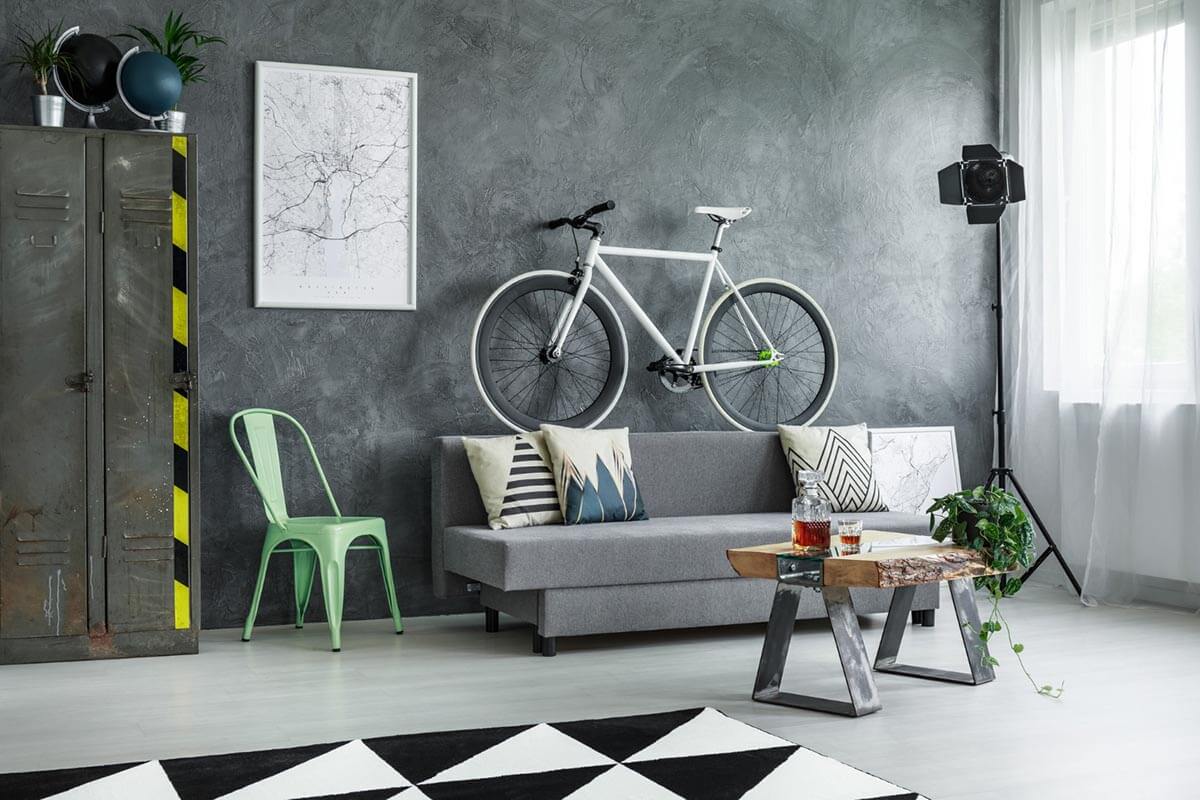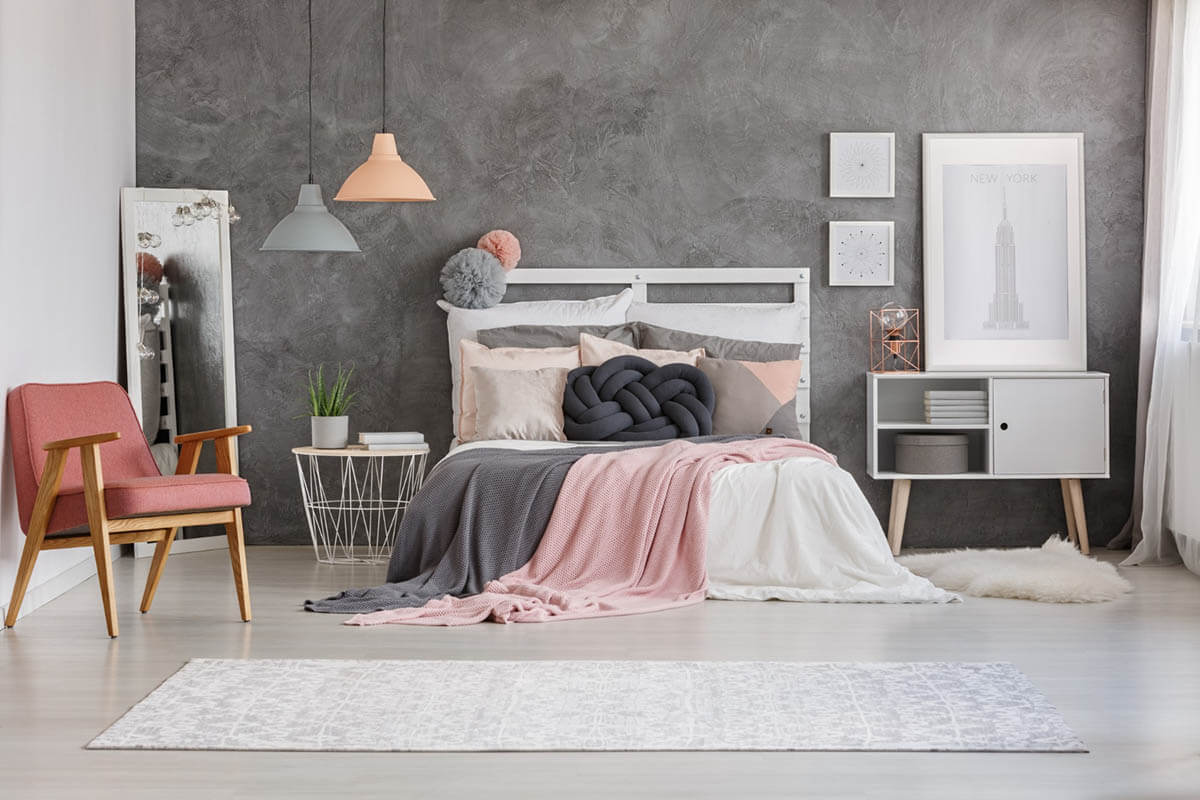
Spain is one of the countries of the Old Continent, with the latest emancipation age. Young people in Spain leave their parents’ home at the age of thirty, and in many cases even later, due to lack of work, economic uncertainty, difficulties with savings and high housing prices, both for sale and rent.
These factors complicate access to housing for this population segment. In fact, on average, young people in Spain need more than six years of savings for the down payment on their first house, which is equivalent to 30% of the total transaction value.
Content:
- What kind of housing does modern youth prefer?
- Can millennials buy a house with that kind of income?
- How can young people access the real estate market?
- Substantial upfront savings
- Calculate the costs associated with buying a house
- Good opportunities
- Which settlements is the purchase more expensive in? Which settlements is it cheaper in?
- House for 190,000 euros, bought by young Spaniards
- What help can I get to buy a house?
“Analysis needs to be done to understand why house prices are rising and becoming more expensive in Spain, especially in areas where there is more demand, in large cities,” says Juan Antonio Gomez-Pintado, president of APCEspaña, an association of employers and developers.
Faced with this problem, various experts are urging the government to take measures similar to those being carried out, for example, by the UK, where the Assistance in House Purchase program is being implemented. In 2013, the UK government initiated this program to enable buyers with a low down payment to get mortgages. The aim was to provide access to house purchases with a deposit of only 5% of the property value. The government has supplemented private mortgage loans up to 20% of a newly built house value.
In Spain, the executive has launched the Public Housing Plan 2018-2021 (extended until 2022), which, among other things, includes housing assistance of up to € 10,800 for young people under 35 to cover the cost of buying a house, with a limit of 20% of the property value, which cannot exceed 100,000 euros. This assistance only applies to real estate located in municipalities or city centres with a population of fewer than 5,000 people.
At the regional level, some communities have come up with initiatives. Take Madrid, for example, where the regional government has pledged € 12 million to guarantee at least 5,000 mortgages for young people under 35. It is a category of financially wealthy people who intend to buy their first house but do not have sufficient savings to obtain a mortgage loan. Following the British format, this plan’s purpose is that young people contribute only 5% of the total transaction amount. The Community of Madrid guarantees 15% of the transaction amount so that the bank can finance up to 95% of the housing.
What kind of housing does modern youth prefer?
Spaniards between the ages of 30 and 34 earn an average of 19,339 euros per year. Data refer to 2018-2019 and is reflected in the Business Insider report. This income is € 1,611 per month, which is below the Spanish average of € 1,929.

Can millennials buy a house with that kind of income?
The average millennial has lower incomes than previous generations of workers. Therefore, their purchasing power is lowered, and the real estate effort index - the number of years they need to work to invest in housing - is above average.
Millennials earn 30% less than their parents
Most Spanish millennials earn less than their parents: between the ages of 20 and 24 it is 11,316 euros, those between 25 and 29 earn 15,876 euros, and those between 30 and 35 earn 19,339 euros per year.
Assuming that the parents of 30-year-olds are currently between 55 and 59 years old (the range, of course, includes other ages), we find that the latter tops the income rankings by age with € 27,282 per year. Their children, millennials, earn 30% less.
The wage gap implies different access to housing. Lower incomes have to either look for smaller houses than the market average or larger mortgages that allow for some payment flexibility.
How can young people access the real estate market?
If access to house ownership is beyond the reach of all families today, it is even more difficult for young people. It is evidenced by data from a study conducted by the Laboratory for Emancipation at the Council for Youth Affairs of Spain (CJE).
The latest figures for 2019 are not very encouraging. Since the real estate bubble burst in 2008, Spaniards under 30 have had to postpone the age of emancipation. Only 18.7% lived outside the family home at the end of last year, mainly in rented housing (58.8%). Only 38.4% owned a house or paid a mortgage, and the rest (2.8%) lived in rented housing.
It is how the Bank of Spain puts it in its recent survey of the country’s housing market between 2014 and 2019: in the formation of households at the age of 26. These results indicate growing problems of access to homeownership.”
The main obstacles young people face are difficulties in accumulating funds for an initial investment and a lack of resources to pay the monthly mortgage payment. The average salary received by a person under the age of 30 at the end of 2019 was 11,532.32 euros per year - less than one thousand euros per month (961.03 euros). Between 30 and 34, this amount is 15 669.87 euros per year (1,305.82 euros per month). Based on these figures, the Emancipation Laboratory calculated that a young Spaniard must earn twice what they are earning now in order to be able to buy a house so that the cost of a mortgage does not exceed 30% of their income which is reasonable.
Substantial upfront savings
The first thing you need to apply for a mortgage is to have “a steady income from work (salary or self-employment) or income (rent, including), as well as a minimum amount of savings,” explains Jordi Dominguez, CEO of Finteca, specializing in mortgage management. As a rule, to obtain a loan, you need to have 30% of the purchase price since 10% goes to pay taxes. The remaining 20% goes to the down payment on the mortgage since financial institutions usually provide a loan in the amount of up to 80% of the assessed value (prices which the bank installs on real estate).

Calculate the costs associated with buying a house
According to Dominguez, one of the biggest obstacles to access to finance remains the payment of the property transfer tax (ITP), which, although subsidized in some autonomous communities, in others, can be 10% of the real estate value, i.e. € 15,000 for properties worth € 150,000. In this example, the buyer should have € 45,000. This amount, according to Dominguez, “is difficult for many people.”
The Emancipation Lab has calculated that the down payment required to buy a 100 square meter house would be € 47,104.80 (about € 1,500 less than in 2018) or, in other words, 4.1 times the annual salary received by a person under the age of 34, or even more.
As for the mortgage payment, it is recommended that 30 to 35% of net monthly income goes towards paying for housing - either rent or mortgage. In fact, in Spain, an average of 30% is allocated for these purposes, with extreme values in the Balearic Islands (41%) or in the Madrid Community (34.51%), which are at the top, as well as in Extremadura (22%) or the Murcia region (23.05%) where prices are lower and less monthly effort is required.
Good opportunities
Experts believe that now is the best time to buy, and it will remain so at least until the end of the first quarter of 2022. Due to the pandemic, “prices are falling, there is little movement, and there are good opportunities,” said Iñaki Unsain, president of the Spanish Association of Personal Assistants for Real Estate (AEPSI).
Unsign gives the following guidelines to try to get around the hurdles and buy property at a reasonable price:
- Instead of buying a house to become independent, it is recommended that you start by renting a modest apartment, which will allow you to create a savings account to cover your start-up costs and down payment.
- Do not buy the home you have always dreamed of first. It is easier for this initial investment to be for a house in transition. After a few years, you can resell it and use the capital gains to improve your house.
- If you do not have the necessary savings when applying for a mortgage, you can apply for an interim (temporary) loan to cover these costs. This type of loan usually requires a surety from a family member.
- The location of the property should be taken into account. Prices decline as you move away from urban centres: if a central location is a must, look for a smaller house or focus on buying a secondary one. If this is not a prerequisite, it is recommended to look for a distance that does not exceed 30-40 minutes by car or public transport. For example, an apartment in the centre of Barcelona of 50 or 60 square meters with one or two bedrooms can cost around 250,000 euros. If you are looking for an apartment far from the city, about 30 kilometres (for example, in Mataro, Granollers, Sabadella), you can buy a three-bedroom apartment for 180,000 euros.
- Buy a house to renovate and transform with the help of people you trust.
- Never buy an apartment with flaws that money cannot solve: the basement will never be bright, and an apartment of 30 square meters cannot have four bedrooms. If a product is very cheap, it does not mean it is a good purchase.
Which settlements is the purchase more expensive in? Which settlements is it cheaper in?
House sales and purchases are down nearly 26% this year, although prices are not yet showing widespread declines. The National Institute of Statistics (INE) records that the growth rates are declining (growth on an annualized basis has been observed for 25 consecutive quarters). Thus, the average house price from April to June increased by 0.1% compared with the growth of 1.1% recorded in the previous quarter and an increase of 1.2% in the second quarter of 2019.
As for specific prices, according to Idealista’s calculations, in August, a square meter in Spain cost an average of 1,735 euros, which is 0.8% less than a year earlier, with the Balearic Islands being the most expensive regions (3,060 euros per square meter), Madrid Community (2,782 euros) and the Basque Country (2,645 euros), and the cheapest are Castile-La Mancha (848 euros per sq.m.), Extremadura (889 euros) and Murcia (1,044 euros).
House for 190,000 euros, bought by young Spaniards
INE publishes a profile of homeowners under 34 and the mortgages they are applying for.
According to the Unión de Créditos Inmobiliarios (UCI), the typical profile of young homeowners in Spain is 31 years old, with little capital stock, who needs 90% financing opts for a variable or mixed mortgage. However, analysis shows that one in three buys a detached or semi-detached house and that the average property price is 190,000 euros.
House sales and purchases in the first quarter of this year rose 1.5% year on year. Moreover, this figure increased by 71.2% in June last year compared to the same month in 2020, according to the National Institute of Statistics (INE).
In this context, and according to UCI transactions, young Spaniards between the ages of 25 and 34 buy housing at an average price of € 190,973 and mostly opt for variable or fixed-rate mortgages that reach 90% of funding and an average of 172,675 euros, which is 29% more than the national average - 133 611 euros.
Young Spaniards with an average salary of € 19,563, according to INE, need 8.82 years of total annual salary to afford a standard mortgage of € 172,675. Moreover, they have to set aside half of their salary for at least five years in order to be able to pay the down payment.

What help can I get to buy a house?
The central government and the autonomous communities offer assistance to young people to buy housing. The government has developed the State Housing Plan for 2018-2021 - a package of measures related to the purchase, lease, restoration and development of the real estate. Each autonomous community adapts to its needs and resources. To become an applicant, you must contact the housing departments of the autonomous community in which you live.
This program provides a non-refundable subsidy of up to € 10,800 for the purchase of housing for people under 35 years of age whose family income does not exceed € 22,550.77 per year, equivalent to three times the Spanish Multipurpose Total Income Ratio (IPREM). This support cannot be more than 20% of the purchase price, which must not exceed 100,000 euros.
Assistance applies only to real estate located in cities with less than 5,000 inhabitants based on registration data with municipal authorities as of January 1, 2020. Thus, the program affects those who seek to live in one of the 6,827 Spanish cities. In addition, there are regional grants for youth, and all information is available on the websites of local institutions.









